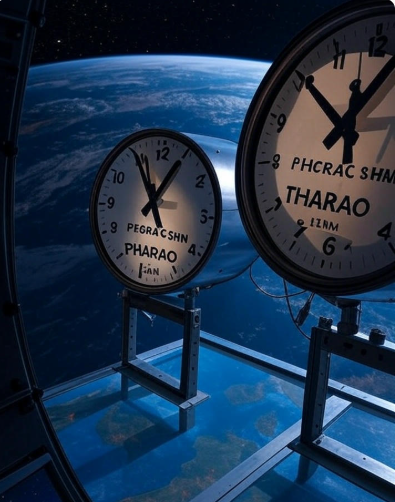For centuries, alchemists dreamed of turning base metals like lead into gold, a pursuit that symbolized the ultimate transformation. While their methods were rooted in mysticism and early chemistry, modern science has finally achieved this feat—though not in the way the alchemists imagined. In January 2025, physicists at the Large Hadron Collider (LHC) at CERN announced a groundbreaking experiment: they successfully transmuted lead into gold, albeit in minute quantities, for a fraction of a second. This achievement, reported by Scientific American, marks a significant milestone in particle physics, offering insights into nuclear reactions, the nature of matter, and potential applications in energy and medicine. Let’s dive into how this happened, what it means for science, and why it’s a far cry from the alchemists’ dreams of wealth.
The Large Hadron Collider: A Gateway to the Subatomic World
The LHC, located near Geneva, Switzerland, is the world’s largest and most powerful particle accelerator. Operated by CERN, this 27-kilometer ring of superconducting magnets accelerates particles to near-light speeds, smashing them together to study the fundamental building blocks of the universe. Since its first operation in 2008, the LHC has made history with discoveries like the Higgs boson in 2012, confirming theories about how particles acquire mass. Its ability to recreate conditions similar to those just after the Big Bang makes it an unparalleled tool for exploring the laws of physics.
In this latest experiment, LHC scientists focused on heavy-ion collisions, specifically using lead nuclei. By accelerating lead ions to extreme energies and smashing them together, researchers created a “quark-gluon plasma”—a state of matter where protons and neutrons break down into their constituent quarks and gluons. This exotic state, which existed in the early universe, allows for unique nuclear reactions that can alter the atomic structure of elements, leading to the transmutation of lead into gold.
How Lead Becomes Gold: The Science of Transmutation
To understand this transformation, we need to revisit some basic chemistry and physics. Elements are defined by their number of protons: lead has 82 protons, while gold has 79. Changing one element into another requires altering the number of protons in the nucleus—a process called nuclear transmutation. In nature, this happens through radioactive decay or stellar nucleosynthesis, but in the lab, it’s far more challenging.
At the LHC, lead ions are stripped of their electrons and accelerated to 99.999% of the speed of light. When these ions collide, the immense energy creates a quark-gluon plasma, where the boundaries between protons and neutrons blur. During these collisions, some lead nuclei lose protons through a process called “proton emission” or through interactions that strip away nuclear particles. If a lead nucleus loses exactly three protons, its atomic number drops from 82 to 79, transforming it into gold.
However, this gold is not the shiny metal we associate with jewelry. The transmutation produces gold isotopes—unstable versions of gold with varying numbers of neutrons. These isotopes decay almost instantly, often within a fraction of a second, into other elements or more stable forms. The amount of gold produced is also vanishingly small, detectable only through the LHC’s sensitive instruments, which measure the particles emitted during these reactions.
A Modern Alchemy: Why This Matters
While the alchemists sought gold for wealth, modern scientists have different goals. The LHC’s ability to transmute lead into gold demonstrates our growing mastery over nuclear reactions and the fundamental forces of nature. This experiment provides several key insights:
1. Understanding Quark-Gluon Plasma
The creation of quark-gluon plasma is a window into the early universe. By studying this state, physicists can learn more about the strong nuclear force, mediated by gluons, which binds quarks together to form protons and neutrons. This knowledge could refine our models of particle interactions and improve our understanding of the universe’s evolution.
2. Nuclear Physics and Element Synthesis
Transmutation experiments help scientists understand how elements form and decay. In stars, heavy elements like gold are created through the rapid capture of neutrons in supernova explosions—a process called the “r-process.” The LHC’s collisions mimic some of these conditions, allowing researchers to study nuclear reactions that are otherwise impossible to observe on Earth.
3. Potential Applications in Energy and Medicine
While producing gold isn’t practical, the techniques developed in this experiment could have real-world applications. For example, similar nuclear reactions could be used to produce rare isotopes for medical imaging or cancer treatment. In energy research, understanding high-energy nuclear processes might lead to advancements in fusion energy, where controlling nuclear reactions could provide a clean, limitless power source.
The Limitations: Why We’re Not Getting Rich
If you’re imagining a future where we turn lead into gold to solve economic problems, think again. The LHC experiment has significant limitations:
- Quantity: The amount of gold produced is on the order of individual atoms, far too small to be economically viable. Extracting even a single gram of gold would require an infeasible number of collisions.
- Cost: Operating the LHC is extraordinarily expensive, with annual costs in the hundreds of millions of dollars. The energy required to produce even a tiny amount of gold far exceeds the value of the gold itself.
- Stability: The gold isotopes created are unstable and decay almost immediately. Stable gold, like the kind used in jewelry, requires a specific balance of protons and neutrons that this process doesn’t achieve.
In short, this experiment is a scientific triumph, not an economic one. The alchemists’ dream of wealth remains out of reach, but the pursuit of knowledge has yielded something far more valuable.
The Broader Impact on Science and Society
The LHC’s achievement is a testament to human curiosity and ingenuity. It shows how far we’ve come from the days of alchemy, replacing trial-and-error with precise, evidence-based science. This experiment also highlights the importance of international collaboration—CERN involves thousands of scientists from over 100 countries, working together to push the boundaries of discovery.
For society, this breakthrough reinforces the value of fundamental research. While the immediate applications may seem distant, history shows that such discoveries often lead to unexpected innovations. The development of the World Wide Web, born at CERN in 1989, is a prime example of how basic science can transform the world.
What’s Next for the LHC?
The success of this experiment opens new avenues for research at the LHC. Scientists plan to conduct more heavy-ion collision experiments to study other transmutations and refine their understanding of quark-gluon plasma. Future upgrades to the LHC, such as the High-Luminosity LHC project, will increase the frequency of collisions, providing more data to analyze. Researchers also hope to explore the production of other rare isotopes, potentially for medical or industrial use.
Beyond the LHC, this work could inspire advancements in smaller-scale accelerators, making nuclear transmutation more accessible for practical applications. While turning lead into gold may never be profitable, the knowledge gained from these experiments could lead to breakthroughs in energy, medicine, and our understanding of the cosmos.
Final Thoughts
The LHC’s transformation of lead into gold is a modern-day alchemy that captures the imagination, even if it doesn’t promise riches. By harnessing the power of particle physics, CERN scientists have achieved what was once thought impossible, shedding light on the fundamental nature of matter. While the gold produced is fleeting and minuscule, the implications of this experiment are vast, offering new insights into the universe and potential applications that could benefit humanity. As we continue to explore the subatomic world, the LHC remains a beacon of scientific progress, proving that the pursuit of knowledge is the true gold of our time.
Sources: Scientific American, CERN



